Chris Grinter, on July 25th, 2011 This Monday I am departing from the usual Arctiinae for something completely different – a microlep! This is a Nepticulidae, Stigmella diffasciae, and it measures in at a whopping 6 mm. I can’t take credit for spreading this moth – all of the nepticulids I have photographed are from the California Academy of Sciences and spread by Dave Wagner while he was here for a postdoctorate position.
The caterpillars mine the upper-side of the leaves of Ceanothus and are known only from the foothills of the Sierra Nevada in California. If you’re so inclined the revision of the North American species of the genus is freely available here (.pdf).
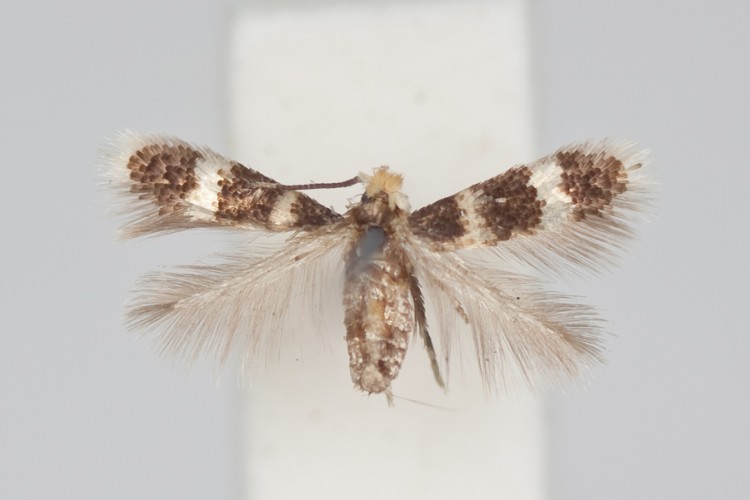 Stigmella diffasciae (Nepticulidae)
Chris Grinter, gada 22 jūlijs, 2011 It’s been a little while since the last GOP challenge, bet this is a softball. I’m hoping they were just too lazy to find a more suitable image…

Chris Grinter, on July 19th, 2011 What would Jesus do if he had some free time – maybe cure a disease, end a war, or feed the starving – but nah, everyone sees that coming. Why not shock them to the core – burn your face on a Walmart receipt! Vismaz, that’s what a couple in South Carolina believe to have found, a Walmart receipt with Jesus’s face on it. This isn’t exactly new or exciting, humans have a wonderful ability to recognize a face in just about anything. Jesus and other characters “appear” on random things all the time, and even in 2005 a shrine was built to the Virgin Mary around a water stain in a Chicago underpass.
Pareidolia anyone? Faktiski, that face looks pretty convincing, I’m not too sure this wasn’t just faked or “enhanced”. The closeups even look like there are fingerprints all over it. Since I don’t have a walmart anywhere near me or a walmart receipt on hand I can’t determine how sensitive the paper is and how easy it would have been to do – but how long do you think before it shows up on ebay? Jebkurā gadījumā, it looks much more like James Randi to me than Jesus (at least we actually know what Randi looks like!).
 from CNN
Chris Grinter, gada 18 jūlijs, 2011 Pār ARTHROPODA, puisis VMD blogeris Maikls Bok dalījās tēlu viņa lauka draugs, Plugg zaļo koku varde. My first thought was of a similar tree frog that haunted welcomed me everywhere I went in Santa Rosa National Park, Kostarika. Lieki teikt, Costa Rica instills a sudden habit of double checking everything you are about to do. This species is known as the milk frog (Phrynohyas venulosa) for their copious amounts of milky white toxic secretions. One of the first stories Dan Janzen told me while while I was with him at Santa Rosa was about this species – and accidentally rubbing his eye after holding it. Thankfully the blindness and burning was only temporary.
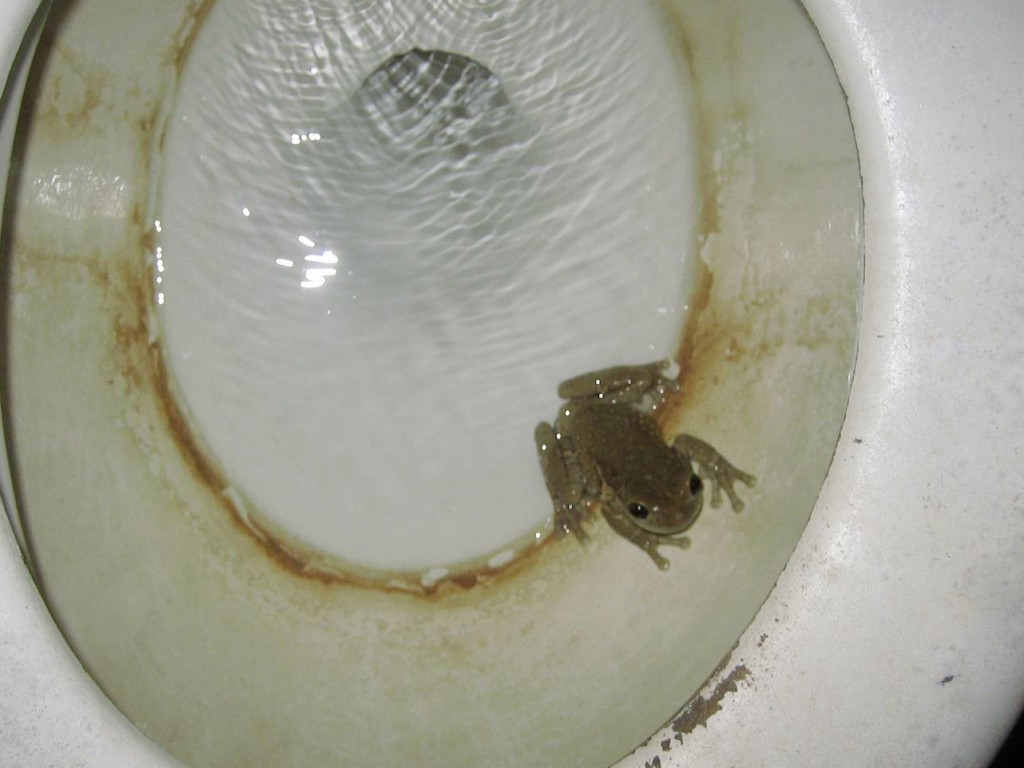 Milk Frog: Phrynohyas venulosa
Chris Grinter, gada 18 jūlijs, 2011 I’ll keep the ball rolling with Arctiinae and post a photo today of Ctenucha brunnea. This moth can be common in tall grasses along beaches from San Francisco to LA – although in recent decades the numbers of this moth have been declining with habitat destruction and the invasion of beach grass (Ammophila arenaria). But anywhere there are stands of giant ryegrass (Leymus condensatus) you should find dozens of these moths flying in the heat of the day or nectaring on toyon.
 Ctenucha brunnea (Erebidae: Arctiinae)
Chris Grinter, on July 12th, 2011 Well as you may have guessed the subject isn’t as shocking as my title suggests, but I couldn’t help but to spin from the Guardian article. I really find it hilarious when I come across anything that says scientists are “astounded”, “baffled”, “shocked”, “puzzled”, – I guess that’s a topic for another time… Nevertheless a patiešām cool butterfly has emerged at the “Sensational Butterflies” exhibit at the British Museum in London – a bilateral gynandromorph! The Guardian reports today that this specimen of Papilio memnon just emerged and is beginning to draw small crowds of visitors. I know I’d love to see one of these alive again – although the zoo situation would take away quite a bit of the excitement. I think the only thing more exciting than seeing one of these live in the field would be to net one myself!
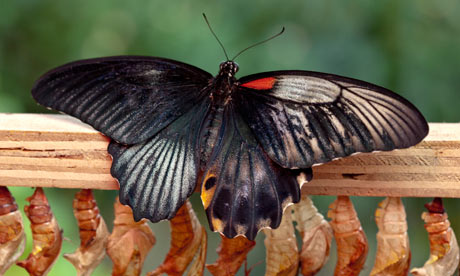
One little thing tripped my skeptical sensors and that is the quote at the end of the article taken from the curator of butterflies, Blanca Huertas. “The gynandromorph butterfly is a fascinating scientific phenomenon, and is the product of complex evolutionary processes. It is fantastic to have discovered one hatching on museum grounds, particularly as they are so rare.”
Labi, I don’t specifically see how these are a “product of … evolutionary processes” inasmuch as visi life in visi forms is a product of evolution. These are sterile “glitches” that are cool, but not anything that has been specifically evolved for or against. Perhaps it would be more adept to call this a fascinating process of genetics (which the article actually describes with accuracy). Arī – butterflies emerge as adults and hatch as caterpillars – but that’s just me being picky.
Chris Grinter, on July 11th, 2011 Šodienas kodes ir skaista un reta suga no DA Arizonas un Meksikas: Lerina incarnata (Erebidae: Arctiinae). Tāpat kā daudzas citas dienā lidojošas sugas, tas ir izcili krāsots un, visticamāk, aposemātisks. Galu galā, saimniekaugs ir pienazāle, un kāpurs ir tikpat satriecošs (zemāk).
 Lerina incarnata (Erebidae: Arctiinae)
Šis veca tēls, izplatītais eksemplārs diez vai dara taisnīgumu, bet viens laimīgs fotogrāfs atrada sievieti, kas olināja pašā kalna galā ārpus Tuksonas, Arizona. Kamēr to darāt, apskatiet dažas citas Filipa lieliskās fotogrāfijas vietnē SmugMug.
 Lerina incarnata - Filips Klīns, BugGuide Kā jau minēju iepriekš, šai kodei ir arī tikpat iespaidīgs kāpurs, kas barojas Ascleapias linaria (pineneedle milkweed).
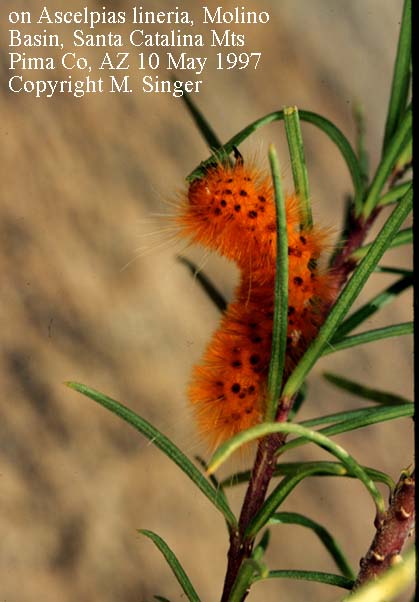
Chris Grinter, gada jūlijs 5, 2011 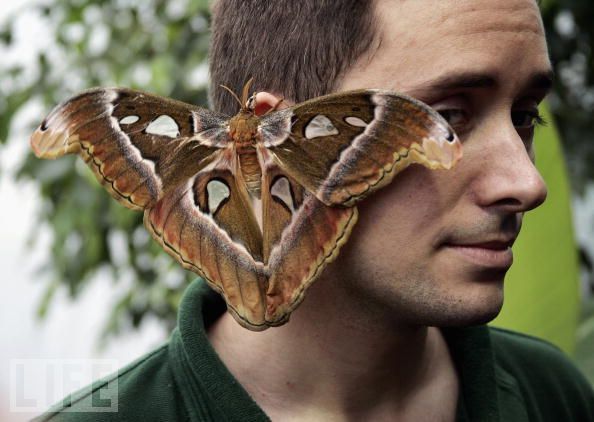
Šķiet, ka pārsvarā ir pilsētas leģendas, kas ietver kukaiņus, kas ielīst mūsu sejā, kamēr mēs guļam.. Slavenākais mīts ir kaut kas līdzīgs “tu ēd 8 zirnekļi gadā guļot“. Faktiski, kad jūs meklējat Google, šis skaitlis svārstās no 4 līdz 8… līdz mārciņai? Nav pārsteidzoši, ka tiešsaistē lietas tiek tik pārspīlētas, it īpaši, ja tas attiecas uz tik populāro arahnofobiju. Es šaubos, ka vidējais amerikānis visas dzīves laikā apēd vairāk nekā dažus zirnekļus; jūsu mājās vienkārši nevajadzētu rāpot ar tik daudz zirnekļu, ka tie katru vakaru nonāk jūsu mutē! Līdzīgs mīts joprojām ir mīts, bet ar patiesības graudu – ka auskariņi naktī ielien jūsu smadzenēs, lai dētu olas. Tā nav taisnība, ka auss ir cilvēka parazīti (par laimi), bet viņiem ir nosliece ielīst ciešā, mitras vietas. Iespējams, ka tas notika pietiekami bieži gadā Ye Olde England ka auskariņš izpelnījies šo bēdīgi slaveno vārdu. Prusaki ir arī dokumentēti kā ausu spelunkeri – bet jebkurš rāpojošs kukainis, kas varētu staigāt pa mums naktī, varētu nonākt kādā no mūsu atverēm.
Tomēr es nekad neesmu dzirdējis, ka kodes ielīst ausī, līdz es to satiku šis stāsts šodien! Man šķiet, ka šī zēna ausī kaut kādā veidā nokļuva apmulsis Noktuīds, lai gan es nevaru nedomāt, vai viņš pats to ielika… Kodes parasti nenolaižas uz cilvēkiem, kamēr viņi guļ, un arī tie nav pakļauti mitrumam., saspringtas vietas. Bet tad atkal viss ir iespējams, daži naktsdzīvnieki dienas laikā rāpo zem mizas vai lapām, lai droši paslēptos. Es pat sastapos cits stāsts ausu kodes no Apvienotās Karalistes (ne tas, ka Daily Mail ir cienījams avots).
Dabiski, daži slinki ziņu avoti ir izmantojot failu fotoattēlus “kodes” tā vietā, lai kopētu fotoattēlu no sākotnējā stāsta. Tas ir īpaši jautri, jo viens no izmantotajiem attēliem ir ar jaunu aprakstīto kožu sugu pagājušajā gadā Brūss Volšs Arizonā. Litofāna leeae iepriekš ir iekļauts manā emuārā divas reizes, bet nekad šādi!
Noslēgumā šeit ir Roberta Kordinga dzejolis (arī kur iepriekš redzamais attēls Tika atrasts).
Apsveriet šo: kode ielido vīrieša ausī
Viens parasts nepamanītu prieku vakars.
Kad kode sit spārnus, visi vēji
No zemes savāc viņa ausī, rūc kā nekā
Viņš kādreiz ir dzirdējis. Viņš kratās un kratās
Viņa galva, licis sievai ierakties dziļi ausī
Ar Q uzgali, bet rēciens nerimsies.
Šķiet, ka visas durvis un logi
Viņa māja uzreiz tika aizpūsta -
Dīvainā apstākļu spēle, pār kuru
Viņam nekad nebija kontroles, bet ko viņš varēja ignorēt
Līdz vakaram pazuda, it kā viņš būtu
Nekad tā nav dzīvojis. Viņa ķermeņa vairs nav
Šķiet savējais; viņš kliedz no sāpēm, lai noslīcinātu
Ārā vējš viņam ausī, un nolād Dievu,
PVO, pirms vairākām stundām, bija labdabīgs vispārinājums
Pasaulē, kas iet pietiekami labi.
Pa ceļam uz slimnīcu, viņa sieva apstājas
Mašīna, liek vīram izkāpt,
Sēdēt zālītē. Automašīnas gaismas nav,
Nav ielu apgaismojuma, nav mēness. Viņa ņem
Lukturis no cimdu nodalījuma
Un tur to pie auss un, neticami,
Kode lido pret gaismu. Viņa acis
Ir slapji. Viņš jūtas tā, it kā viņš pēkšņi būtu svētceļnieks
Negaidītas pasaules krastā.
Kad viņš guļ zālītē, viņš ir zēns
Atkal. Viņa sieva spīd lukturīti
Debesīs un ir tikai klusums
Viņš nekad nav dzirdējis, un mazais ceļš
Gaisma dodas kaut kur, kur viņš nekad nav bijis.
– Roberts Kordings, Kopējā dzīve: Dzejoļi (Fort Lee: CavanKerry prese, 2006), 29–30.
Chris Grinter, on June 30th, 2011 
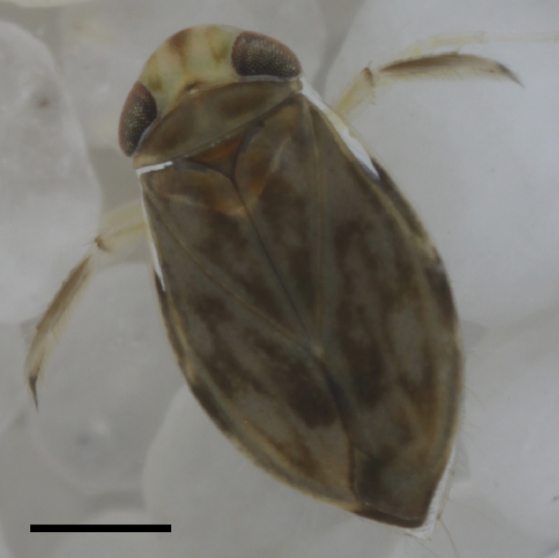 Micronecta scholtzi The hills of the European countryside are alive in the chorus of amorous, screaming, male aquatic bugs. The little insect above, Micronecta scholtzi (Corixidae), measures in at a whopping 2.3mm and yet produces a clicking/buzzing sound easily audible to the human ear above the water surface. To put that in perspective: trying to hear someone talk underwater while standing poolside is nearly impossible, yet this minute insect generates a click loud enough to be mistaken for a terrestrial arthropod. While that doesn’t sound too impressive when we are surrounded by other loud insects like the cicada, M. scholtzi turns out to be a stunningly loud animal when you take into consideration the body size and medium the sound is propagating through to reach our ear. Put into numbers the intensity of the clicks underwater can reach up to 100 dB (Sound Pressure Level, SPL). Shrink us into the insect world and this sound production is equal to a jackhammer at the same distance! So what on earth has allowed this little bug to make this noise and get away with it in a world full of predators?
The authors naturally point out how surprising these results are. The first thing that becomes apparent is that the water boatmen must have no auditory predators since they are basically swimming around making the most noise physically possible for any small animal anywhere. Really this isn’t too surprising since most underwater predators are strictly visual hunters (dragonfly larvae, water bugs and beetles etc…). It is very likely that sexual selection has guided the development of these stridulatory calls into such astounding levels. The second most surprising thing is clear once you graph just how loud these insects are relative to their body size. At the top of the graph is the bottlenose dolphin (T. truncatus) with its famous sonar. But the greatest outlier is actually our little insect in the bottom left with the very highest ratio between sound and body size (31.5 with a mean of 6.9). No other known animal comes close. It is likely though that further examination of other aquatic insects may yield similar if not more surprising results!
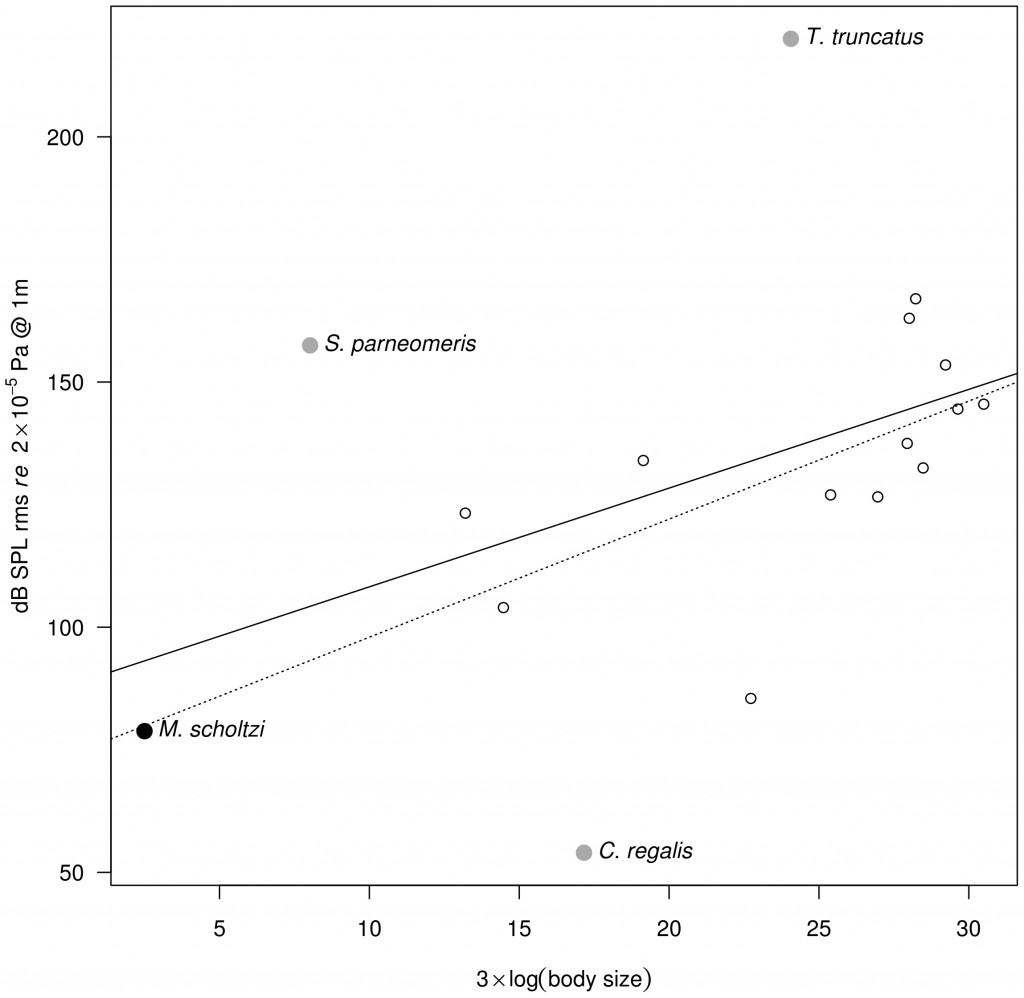
To be more accurate about the “screaming”, the bugs (bugs in this instance is correct; the Corixidae belong to the order Hemiptera – the true bugs) are likely to be stridulating – rubbing together two parts to generate sound instead of exhaling air, drumming, uc… In the article the authors speculate that the “sound is produced by rubbing a pars stridens on the right paramere (genitalia appendage) against a ridge on the left lobe of the eighth abdominal segment [15]”. Without pulling up their citation, it appears that stridulation by males in the genus is well documented for mate attraction. And as you would expect, news outlets and science journalists read “genitalia appendage” and translate that to penis: and you end up with stories like this. The function of the parameres can be loosely translated to similar to mandibles in that they are opposing structures (usually armed with hairs) for grasping. The exact use of them may differ by species or even orders, but they are very distinct form the penis (=aedeagus) since they simply help facilitate mating and don’t deliver any sperm. So in reality you have genital “claspers” with a “pars stridens”. And the best illustration of a pars stridens is over on the old blog Archetype. This structure is highlighted below in yellow (and happens to exist on the abdomen of the ant). But in short – it’s a regular grooved surface akin to a washboard. In the end the sentence quoted above should be translated to “two structures at the tip of the abdomen that rub together like two fingers snapping”.
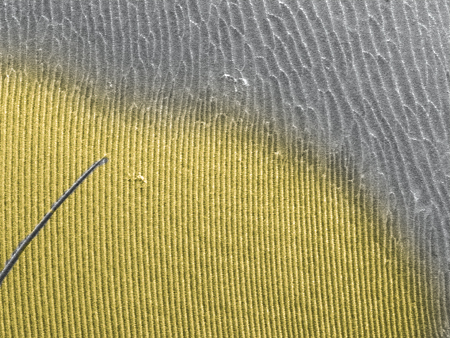 Detail of the pars stridens (in yellow) on the forth abdominal tergite in a Pachycondyla villosa worker (Scanning Electron Micrograph, Roberto Keller/AMNH) Continue reading The incredibly loud world of bug sex
Chris Grinter, gada 20. jūnijā, 2011 Es turpināšu ritināt bumbu ar šo sēriju un mēģināšu padarīt to regulārāku. Es arī pievērsīšos tam, lai katru nedēļu izceltu jaunu sugu no milzīgajām kolekcijām šeit, Kalifornijas Zinātņu akadēmijā. Tam vajadzētu sniegt man pietiekami daudz materiāla… vismaz dažus simtus gadu.
 Grammia edwardsii (Erebidae: Arctiinae) Šīs nedēļas eksemplārs ir tīģerkode Grammia edwardsii. Vēl pirms dažiem gadiem šī kožu dzimta tika uzskatīta par atsevišķu no Noctuidae – bet nesenā molekulārā un morfoloģiskā analīze liecina, ka tas patiesībā ir noktis. Erebidae dzimta tika izvilkta no Noctuidae iekšpuses, un tajā tika ievietoti Arctiidae, pārvēršot tos Arctiinae apakšdzimtā. Labi, garlaicīga taksonomija – visā visumā, tā ir skaista kode, un par to gandrīz nekas nav zināms. Šis paraugs tika savākts Sanfrancisko gadā 1904 – faktiski gandrīz visi zināmie šīs sugas eksemplāri tika savākti pilsētā ap gadsimtu miju. Lai gan šī kode izskatās ļoti līdzīga bagātīgai un plaši izplatītai Grezns Grammy, rūpīga acu analīze, spārnu forma un antenas apgalvo, ka šī patiesībā ir atsevišķa suga. Es uzskatu, ka pēdējais paraugs tika savākts aptuveni 20. gadsimta 20. gados, un kopš tā laika tas nav redzēts. Visticamāk un žēl, ka šī kode pēdējā laikā varētu būt izmirusi 100 gadu SF līča reģiona attīstība. Grammia, un Arctiinae kopumā, nav zināmi ar augstu saimniekspecificitātes līmeni; viņi mēdz būt kā mazas govis un barojas ar gandrīz jebko, kas viņu ceļā nonāk. Tāpēc joprojām ir neizpratnē, kāpēc šai kodei šodien nebūtu dzīvotnes, pat tik ļoti satrauktā pilsētā. Iespējams, šī kode specializējās sāls purva apgabalos, kas ieskauj līci – kas kopš tā laika ir iznīcināti nekustamā īpašuma poligona dēļ (1/3 no visa līča tika zaudēts, lai aizpildītu). Vai varbūt šis naktstauriņš joprojām ir pie mums, bet nekad netiek savākts, jo tā ir izvairīga dienā lidojoša suga. Es vienmēr skatos pavasarī parkā, lai redzētu nelielu oranžu izplūšanu…
|
Skepticisms
|














